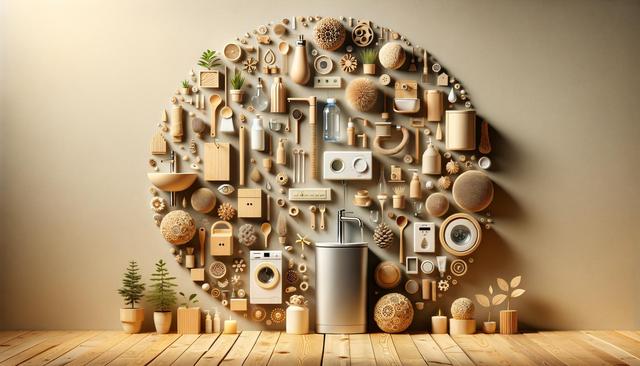
Essential Water-Saving Fixtures Every Home Should Consider
Why Water Conservation Matters
Water conservation is not only an environmental responsibility but also a practical way to reduce household expenses. With increasing pressure on local water supplies due to population growth and climate change, the need for efficient water usage has never been greater. Homes that incorporate water-saving fixtures can significantly cut down on their overall consumption, helping to preserve natural resources while lowering monthly utility bills. In many areas, local governments and utility providers even offer incentives for upgrading to more efficient options, making water conservation both a sustainable and economical choice.
Beyond saving money, reducing water waste helps protect ecosystems that depend on freshwater sources. Rivers, lakes, and underground aquifers are all impacted by excessive extraction, which can lead to habitat loss and declining water quality. By simply upgrading a few household fixtures, homeowners can make a tangible difference in preserving these essential resources for future generations.
Low-Flow Showerheads
Low-flow showerheads are one of the most effective and straightforward upgrades for reducing water usage in the bathroom. Traditional showerheads can use up to 2.5 gallons per minute (GPM), while low-flow models typically use 2.0 GPM or less without sacrificing water pressure or user comfort. Modern designs incorporate aerating or laminar-flow technologies that maintain a strong spray while minimizing water use.
Some advantages of low-flow showerheads include:
- Reduced water and energy bills
- Easy installation, often requiring no professional help
- Compatibility with a wide range of bathroom styles
When choosing a low-flow option, it’s helpful to look for units certified by national efficiency programs, as these have been independently tested to meet water-saving standards. Many homeowners are surprised to find that the difference in water pressure is barely noticeable, yet the savings over time are significant.
Efficient Faucet Aerators
Faucet aerators are small, inexpensive devices that screw onto the end of faucets to control water flow. By mixing air with the stream of water, aerators reduce usage without affecting performance. These devices are particularly useful in kitchens and bathrooms, where faucets are used frequently for tasks like washing hands, brushing teeth, and rinsing dishes.
Benefits of installing faucet aerators include:
- Lower water consumption during daily tasks
- Reduced energy use for hot water
- Minimal cost and effort to install
Most aerators limit flow to 1.0 to 1.5 GPM, compared to older faucets that may use over 2.0 GPM. They are available in various sizes and spray patterns to suit different needs and preferences, making them a versatile addition to any water conservation effort.
High-Efficiency Toilets (HETs)
Toilets account for nearly 30% of indoor water use in the average home, making them a key target for efficiency improvements. High-efficiency toilets (HETs) use significantly less water per flush—typically 1.28 gallons compared to older models that use 3.5 gallons or more. Some models even offer dual-flush options, allowing users to choose between a light and full flush depending on the need.
Advantages of HETs include:
- Significant long-term water savings
- Modern, sleek designs that complement updated bathrooms
- Improved flushing performance thanks to newer technology
When selecting a toilet, it’s wise to consider models that are third-party certified for both water efficiency and performance. Replacing just one outdated toilet can save thousands of gallons of water annually, making this upgrade one of the most impactful changes a homeowner can make.
Smart Irrigation Systems
Outdoor water use can be just as significant as indoor consumption, especially during warmer months. Smart irrigation systems use weather data, soil sensors, and programmable timers to optimize watering schedules and avoid overwatering. These systems can adjust automatically based on rainfall and temperature, ensuring that plants receive just the right amount of hydration without wasting water.
Key features of smart irrigation systems include:
- Remote control via smartphone apps
- Customizable watering schedules
- Real-time weather integration
For homeowners with gardens or lawns, switching to a smart irrigation system can lead to substantial reductions in water use. In addition to conserving resources, these systems help maintain healthier plants by creating consistent, appropriate watering conditions. This smart technology is well-suited for modern homes seeking to align sustainability with convenience.
Water-Saving Dishwashers and Washing Machines
Modern dishwashers and washing machines have made impressive strides in water efficiency. Energy-efficient dishwashers use sensors to determine the necessary wash time and water volume, often using less water than washing dishes by hand. Similarly, high-efficiency washing machines adjust water levels based on the size of the load, using up to 50% less water than older models.
Features to look for in water-saving appliances include:
- Sensor-based load detection
- Multiple cycle options tailored to fabric or dish types
- Certification by recognized efficiency programs
While the upfront cost may be higher, the long-term savings in both water and energy make these appliances a worthwhile investment. Many models are also designed with user-friendly controls and quiet operation, adding to their appeal for busy households. Choosing efficient appliances supports a more sustainable lifestyle without compromising on performance or convenience.